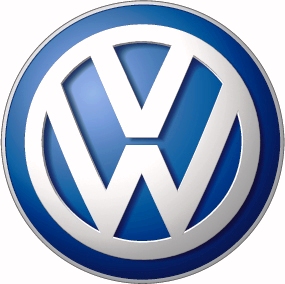A relative latecomer to the SUV and CUV markets, Volkswagen is looking to catch up fast. Several senior executives have now revealed plans that appear to include both a full-size ute, as well as something smaller than VW’s current compact, the Tiguan.
The maker is likely to target one or both of these at the U.S. market where it is racing to regain a bigger share after years of neglect. It is possible that development work may, in fact, be spearheaded by newly-expanded development operations in California.
The new models, meanwhile, will offer VW an opportunity to test the limits of its all-new platform program, a strategy that uses just five individual “architectures” as the base for more than 200 different models sold through the group’s dozen different automotive brands.
The bigger of the new utes will be a seven-seat alternative to a minivan, according to a senior VWAG spokesman quoted by the Bloomberg news service – which expanded upon comments made by VW’s CEO Martin Winterkorn during the recent Paris Motor Show.
It is unclear how large that new model might be; a European-style 7-seater might be only a bit larger than the current VW Tiguan. If aimed specifically at the States, however, it might result in something even larger than the Touareg, the maker’s first sport-utility offering.
Spokesman Peter Thul confirmed that a second crossover would be smaller than the Volkswagen Tiguan.
Separately, Jonathan Browning, the CEO of the Volkswagen Group of America, has indicated to TheDetroitBureau.com his desire to have at least one more crossover in the line-up considering the strong demand for CUVs in the States.
VW has long been “significantly underrepresented” in the U.S., CEO Winterkorn has complained, and the executive has been steering more resources to the development of products that can revive its once-strong position in the market.
That has resulted in some initial success, the launch of an American version of the Passat – at an all-new plant in Tennessee – has helped spur sales that rose 37% during the first nine months of 2012. Nonetheless, the maker is on track to remain as much as a third behind the sales numbers it posted during its peak in the American market during the 1960s and ‘70s. But VW hopes to exceed its former record and reach as much as 800,000 sales annually by late in the decade.
To further support its U.S. campaign, it has invested $27 million to open the new Test Center California in the Los Angeles suburb of Oxnard. That will help support other operations including a Southern California design center and a high-tech research lab in Silicon Valley.
All three could play a crucial role in the development of the new CUVs.
But those projects will also test VW’s bold new platform strategy. The maker has come up with a handful of highly modular architectures that can be used for front-, rear- or all-wheel-drive vehicles, those with front- or rear-mounted engines, and those using alternative powertrain technologies.
The smaller of the new crossovers would likely be based on the MQB platform – shared with models as diverse as the VW Polo and Tiguan as well as the Audi Q3. Depending on how much larger it goes, the maker might base the 7-seater off the MQB or the higher-end MLB architecture.
In an interview with TheDetroitBureau.com in Paris, VW’s technical chief Ulrich Hackenberg said the target is a 30% reduction in product development and manufacturing costs, with the new platform strategy also making it possible to quickly add more models to the maker’s line-up where needed to meet competition.
By expanding its crossover line-up, VW specifically hopes to challenge segment leaders General Motors and Toyota.

